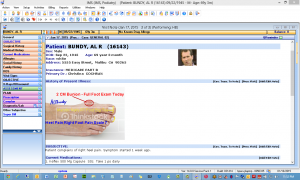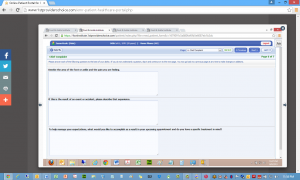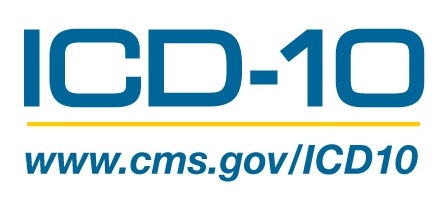
For pain doctors, efficiency and practicality are crucial to patient care. Whether it is pain medicine, anesthesiology, or neurology, pain specialists recognize the importance of taking a comprehensive approach to evaluating and treating patients.
For this reason, pain management practices need to adopt Electronic Health Records (EHRs) equipped with the most effective tools found in pain medicine EHRs.
In this article, we explore why pain doctors need better pain management EHR tools and the importance of their role.
3 Common Problems of Pain Doctors Inside Their Clinics
The Centers for Disease Control and Prevention estimates that 20.4% of U.S. adults suffer chronic pain, while 8.0% suffer from high-impact chronic pain.
Physicians may find this study helpful in focusing on pain management interventions.
However, some issues can hinder pain doctors’ efforts to manage their patients’ pain.
- Lack of Education.
The education of health care professionals in pain management is still low on the list of priorities despite decades of research identifying unmet global needs. As a result, many providers still lack adequate understanding of the pathophysiology (pain treatment) and the physiologic effects of opioids and nonopioid treatments. The hesitation of staff to trust patients’ perceptions about pain lead patients to seek help elsewhere.
- The Restriction of Opioids.
Some patients with chronic pain may not be able to receive effective pain management due to opioid restrictions and protocols. Pain doctors may also be unable to seek treatment for pain altogether due to mandatory opioid restrictions and protocols for opioid prescribing as well. According to respondents, healthcare providers can become drug gatekeepers if they misuse narcotic medications, which makes them untrustworthy partners in delivering pain management.
Many states across the US have addressed the issue by legislating pain management and safe opioid prescribing training for providers. EHR access allows physicians to quickly access previous health history and medication use to formulate a new strategy or see a pattern.
- Physician Burnout
Often, primary care providers who treat chronically ill patients suffer from burnout. It is mainly due to their feelings of incapacity to assist patients suffering from pain.
A pain doctor in a small or solo practice or an independent unit may be more prone to burnout. A financial issue can also accelerate burnout and complicate it in the process. Therefore, it is best to use a holistic approach, consisting of time management and relaxation exercises.
Why is an EHR Important in Pain Management?
Pain management requires a high level of expertise. Many companies now offer EHR solutions. However, most don’t offer specialized types of pain management services.
The purpose of pain management EHRs is to optimize physician performance, reduce risks, and facilitate better decision-making. Patients can also manage their check-in process and communicate with their physicians about their health. For pain doctors, the pain management EHR can streamline clinical workflows and provide accurate records that ensure their patients receive proper and timely treatment.
Why Do Pain Doctors Need Better EHR Tools?
Pain doctors know that not all EHRs are the same, and while generic EHRs lack the documentation tools, it’s difficult for them to diagnose and treat their patients. This is why they must look for a pain medicine EHR that provides the right tools to simplify the management of their patients.
An EHR designed explicitly for the pain management field, such as IMS Pain Management EMR Software, can help provide quality care.
Through this software, pain doctors can improve documentation, access to pain billing software ,patient information access, and effective decision-making for people suffering from pain.
The Best EHR Tools for Pain Management
- Flexible Pain EHR Templates
Customizable, flexible templates in pain management EHRs enable physicians to customize their documentation process to match their workflow or patient. Indeed, pain management providers rely on EHR templates to perform all of their tasks.
Moreover, templates can significantly reduce the time it takes to document patient visits, findings, referrals, pain billing procedures, etc. To ensure continuity of care, physicians must use customized templates to chart and enter patient information accurately. They can keep a record of any injections and procedures for future reference.
- E-Prescription & Prescription Drug Monitoring Programs (PDMPs)
According to the American Medical Association Journal of Ethics, e-prescribing is a core feature of CPOE systems that enable clinicians to order diagnostic tests, patient care activities, and referrals in addition to medications. E-prescriptions for pain management are widely used and accepted by pharmacies, clinics, hospitals, and practitioners due to the Electronic Prescriptions for Controlled Substances (EPCS) rule passed on June 1st, 2010, by the DEA. This rule allows the use of modern technology for controlled substance prescriptions. Because we live in a tech-savvy generation, e-prescriptions are often the preferred choice submitted by medical professionals and accepted by pharmacies. It is crucial to implement a pain management EHR that allows for E-prescriptions.
While prescribing pain medications can be challenging, prescription pain medications can help manage patients’ symptoms. The doctor must carefully monitor all pain medications prescribed and check for any signs of addiction.
Our pain management EHR directly integrates provider access to the Prescription Drug Monitoring Programs (PDMPs); the electronic database that monitors controlled substance prescriptions in each state within the US. The feature allows for timely information helpful for prescribing and evaluating patient behaviors to decrease substance abuse treatment admissions. Providers no longer have to use additional browsers or devices to utilize the Prescription Drug Monitoring Programs (PDMPs).
Our pain management EHR is a convenient one-stop shop for servicing the patient.
- Telemedicine
Integrating telemedicine with practice management software like EHRs has become a necessity for pain management. Patients who suffer from chronic pain frequently travel up to an hour to see a clinic. Telemedicine reduces the need for these trips, resulting in the following benefits:
- Providing pain management with a team of pain experts in a convenient and timely manner.
- Having fewer missed work days.
- Local testing and other services are available.
- Reducing stress and pain from long car trips.
- A comprehensive care approach to medical and non-medical care.
- Providing follow-up information without having to visit in person.
Pain management practice can save time by integrating EHR and medical billing systems with pain billing software. Integrated systems can pull visit coding and documentation directly from their pain management EHR, which reduces copying time. Also, EHRs can remind physicians to code and document during visits. As a result, pain providers and billing staff will have less work after each visit. The medical billing specialist can submit claims timely when the documentation is already in the medical billing system.
- Pain Management Patient Healthcare Portal
Registering as a patient while in the clinic can be problematic for those who experience pain. They can start filing immediately by activating the EHR’s patient portal feature. Patients can access their personal health information (PHI) at any time from anywhere through a quality, secure patient portal. Patients can also make payments, schedule appointments, and cancel them through the patient portal.
Pain management requires full patient involvement and participation. It is necessary to provide regular treatment to those under specific pain management protocols.
Pain management practices can use follow-up reminders when it comes to Urinary drug testing (UDT). UTDs are frequent in the treatment plan for patients who are prescribed opioid therapy for chronic pain. Pain management EHRs can quickly remind your patient of their next UDT.
Nevertheless, a treatment plan’s effectiveness depends on whether individuals follow instructions, take medications, obtain external tests, and schedule follow-up appointments. It is also possible that the practice will lose revenue from missed appointments. An EHR should provide automated appointment reminders and confirmations and a Patient Portal to increase patient engagement. The patient’s name is added to a follow-up list whenever a follow-up appointment is not scheduled within the agreed-upon timeframe.
The following EHR tools ensure that pain doctors can consistently provide quality healthcare to their patients. Thus, get an EHR that meets the specific needs of your pain management practice.
Choose the Top EMR/EHR Software
Over the years, we have assisted medical practices with physical medicine EMR/EHR selection, implementation, and software usage. We specialize in providing customized EMR/EHR software to meet your practice’s specific needs.
Schedule a demo or contact us through the contact form for more personalized information. Let’s work together to find the best software for your practice!
Do you have a favorite EHR add-on service? You are free to comment below!









 Healthcare providers can breathe a sigh of relief. Implementation of ICD-10 code sets has been delayed another year thanks to a bill passed in the Senate on March 31. The controversial Protecting Access to Medicare Act of 2014, which passed with a vote of 64 to 35, has pushed the compliance deadline to October 1, 2015.
Healthcare providers can breathe a sigh of relief. Implementation of ICD-10 code sets has been delayed another year thanks to a bill passed in the Senate on March 31. The controversial Protecting Access to Medicare Act of 2014, which passed with a vote of 64 to 35, has pushed the compliance deadline to October 1, 2015. The
The 